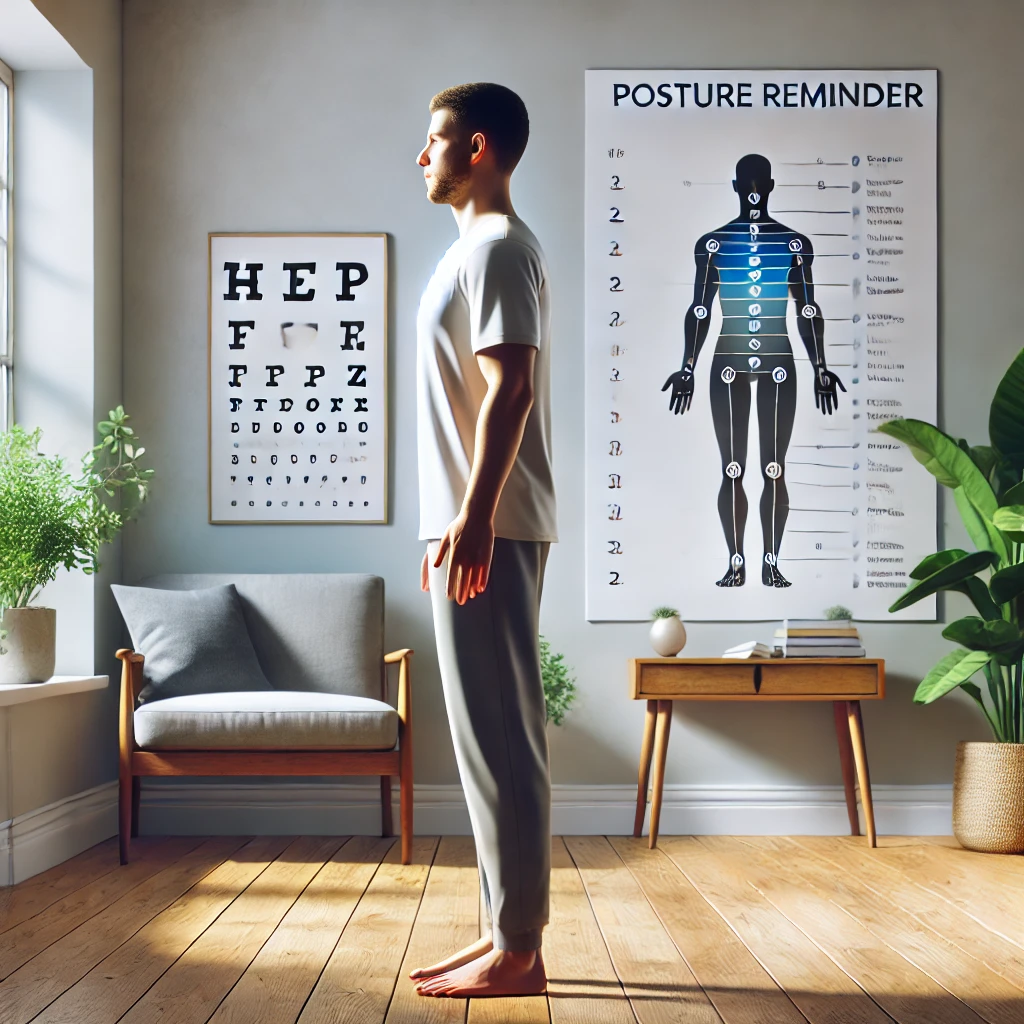Introduction
Good posture is more than just standing tall—it’s essential for spinal health, muscle balance, and overall well-being. Poor posture can lead to back and neck pain, decreased flexibility, and even fatigue. Fortunately, improving posture is achievable with consistent effort and the right techniques. This guide covers effective strategies to help you align your body correctly, reduce discomfort, and boost confidence through better posture.

Why Good Posture Matters
Reduces Pain and Discomfort
Proper alignment minimizes strain on the spine, muscles, and joints, alleviating common issues like back, neck, and shoulder pain.
Enhances Breathing and Circulation
An upright posture allows your lungs to expand fully and improves blood flow throughout the body.
Boosts Energy and Mood
Standing or sitting upright can lead to increased energy levels and improved mental outlook.
Improves Physical Appearance
Good posture enhances your overall appearance, making you look taller, more confident, and poised.
Common Postural Problems
- Slouching or rounded shoulders
- Forward head posture
- Anterior pelvic tilt
- Hunchback (kyphosis)
- Uneven hips or shoulders
Effective Techniques to Improve Posture
1. Practice Postural Awareness
- Check your alignment: Regularly assess your posture in mirrors or photos.
- Mind your habits: Avoid prolonged slouching or crossing legs while sitting.
2. Strengthen Core Muscles
- Exercises to try: Planks, dead bugs, bird-dogs, and bridges.
- Why it helps: A strong core supports the spine and promotes better alignment.
3. Stretch Tight Muscles
- Focus on: Chest, hip flexors, hamstrings, and lower back.
- Recommended stretches: Chest openers, hip flexor lunges, seated hamstring stretches.
4. Adjust Your Workstation
- Ergonomic setup: Monitor at eye level, chair with lumbar support, feet flat on the floor.
- Take breaks: Stand, stretch, or walk every 30–60 minutes.
5. Use Posture-Correcting Devices
- Options include: Braces, posture correctors, or ergonomic pillows.
- Purpose: Serve as a reminder to maintain proper alignment throughout the day.
6. Practice Proper Sitting and Standing
- Sitting tips: Keep shoulders back, spine straight, and knees at a 90° angle.
- Standing tips: Distribute weight evenly, avoid locking knees, engage your core.
7. Incorporate Yoga or Pilates
- Why it helps: These disciplines emphasize body awareness, flexibility, and strength.
- Best poses: Mountain pose, cat-cow, cobra, and child’s pose.
8. Improve Walking and Sleeping Posture
- Walking: Keep head up, shoulders relaxed, and arms swinging naturally.
- Sleeping: Use a supportive pillow and mattress; avoid sleeping on your stomach.
Tips for Maintaining Good Posture
- Set posture reminders on your phone or computer.
- Use visual cues like sticky notes or wall mirrors.
- Stay consistent—improvement takes time and daily practice.
- Listen to your body and make adjustments when discomfort arises.

Conclusion
Improving your posture can transform your physical health and self-confidence. By strengthening muscles, stretching regularly, and staying mindful of body alignment, you can correct postural imbalances and prevent discomfort. Start with small changes and stay consistent—your body will thank you for it.





